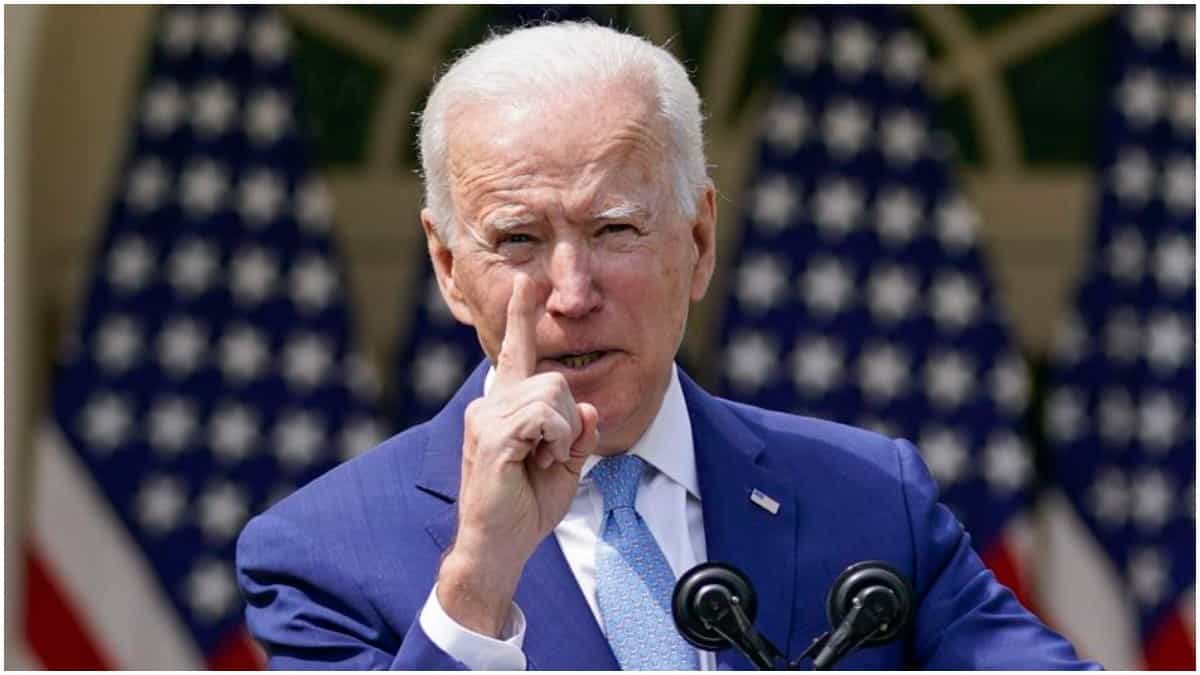A Phoenix man in his early 20s lingers outside a Dollar General store in Sierra Vista, Arizona, for hours. He props open the hood of his black sedan. Cochise County Sheriff’s Department deputies and border patrol agents make him right away. He claims his car broke down. Nothing to see here, he insists. They think he’s a human smuggler.

They move on, but it’s a strategy. They watch the man, who is a U.S. citizen, on hidden cameras. “This cat is going to wait us out,” says one. They wait him out instead. And move he does. As night falls, a deputy sees the man pick up two illegal immigrants down the road. They sneaked through the unforgiving desert, which is protected if you can call it that, by both Obama’s and Trump’s border walls.
They’re far from alone. The Sheriff’s Department’s network of more than 1,000 cameras, hidden throughout the desert near the wall, has been capturing the images of illegal immigrants all day. Illegal immigrants crawl three miles on hands and knees. One drags a blanket behind him to wipe out the trail. Others are hunched over from the heaviness of their backpacks. They are guided by a cartel lookout perched on a mountain nearby.
“They dress in camouflage provided by the cartels,” Detective Cody Essary says. “They wear carpet shoes and masks.” When he’s not tracking illegal immigrants, Essary, who wears a cowboy hat, is on ranch patrol, investigating the murder of cattle, like a southern border character in “Yellowstone.”
In one instance, deputies discovered a 24-year-old woman who tried to get over the Obama border wall with a rope but ended up caught upside down, hanging off the wall. The cartel left her there to die.
“We do not have control of the border. They do,” says Grady Butler, the radio host turned Cochise County Sheriff’s public information officer, referring to the Sinaloa cartel, a refrain we hear repeated several times.
“We’re not against immigration,” emphasizes Deputy Chris Oletski, who is part of the strike team of armed deputies who work as a smuggling interdiction team.
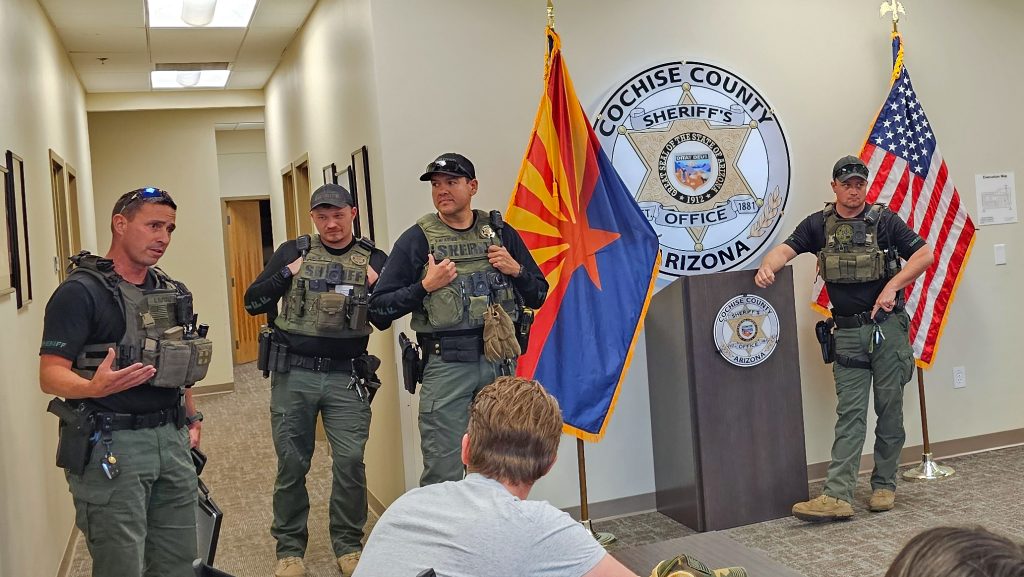
“We’re against illegal immigration. We are asking that people be screened; that they be productive members of society. The American people have spoken,” he says.
Some of the illegal immigrants have backpacks loaded with fentanyl, a potent narcotic that kills more than 70,000 Americans every year. If they make it into the interior U.S., ferried by cartel-funded human smugglers who are often U.S. citizens looking for a quick buck, they must send 25-30% of their meager wages back to the cartel.
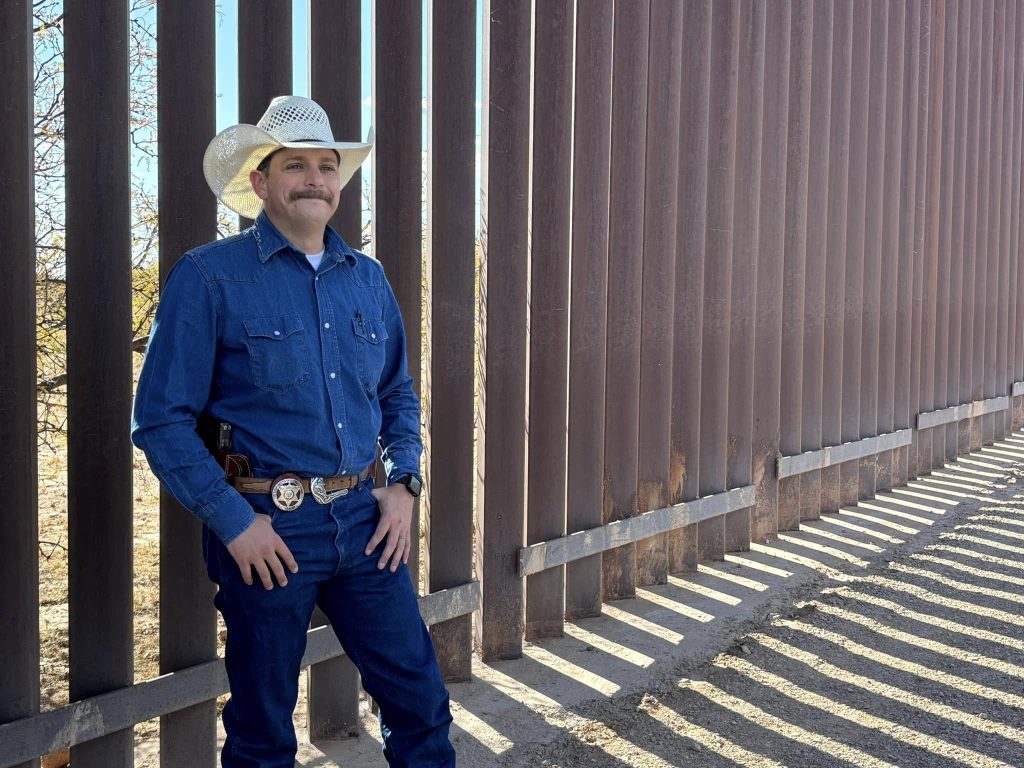
About 61% make it through here, where law enforcement has developed a model, aggressive program to apprehend “gotaways” who get through the sieve-like border wall. In other less forward-thinking or funded counties, it’s wide open, and what scares law enforcement most isn’t the people they catch. It’s the people they didn’t.
“The unknown is what is scary,” says Capt. Tim Williams. “This is just what we know. The vast majority of the border is just wide open. The unknown is what concerns us. It’s a wide-open desert.”
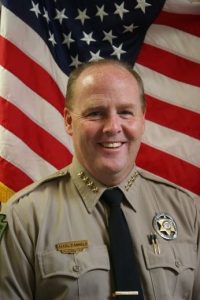
In this dusty corner of Arizona where Wyatt Earp, Geronimo, and Pancho Villa once roamed, which has been dubbed “ground zero” in the border crisis, authorities don’t see many asylum seekers or kids because of the rough terrain; they get the people who can’t risk giving themselves up at the front door. And there’s a lot of them.
It’s a humanitarian crisis.
“It took 19 terrorists to bring America to its knees on 9/11. This should scare every American,” Oletski says. “A lot of children are being hurt. Women are being trafficked. It’s modern-day indentured servitude.” In one instance, deputies found a 10 to 12-year-old boy under a dashboard with “clear signs of abuse.” More than 300,000 children were “lost,” says Oletski.
“If we can stop one child from being abused for one more day, it’s a win.”
“People say, ‘What do you have against these people?’” he notes. “They are destined for a really dark life, indebted to the cartels. Here in Cochise County, we are stopping the exploitation of migrants. If we can stop one child from being abused for one more day, it’s a win.”
The cameras, funded by donations and local dollars, are powered by solar panels tucked away in fake rocks. However, despite all of the effort, at the end of the day, local law enforcement must hand the illegal immigrants back over to the U.S. Border Patrol, where it’s anyone’s guess what will happen to them. Some are released and given court dates that are even eight years into the future. Others are deported. Some of those people come right back.
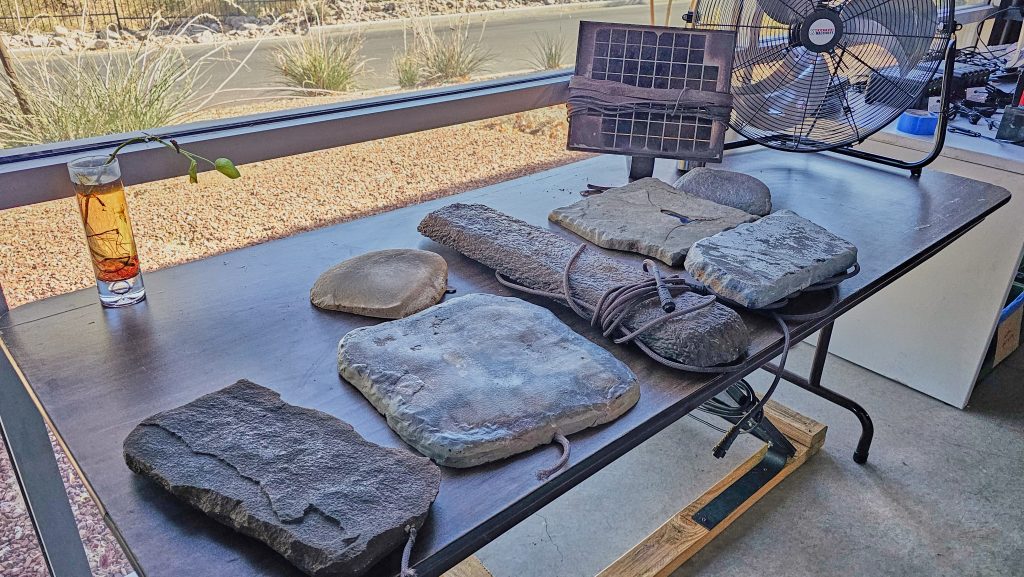
Unfortunately, says Brian Dorow, the former Homeland Security official from Waukesha County, Wisconsin, who brought a group here for a briefing, every border county isn’t as “active and advanced” as Cochise. Some border sheriffs operate out of single-wide trailers and use Hotmail instead of government email, he says. The goal is to replicate the Cochise County model throughout the southern border, operationalizing sheriffs as the front (or at least the second) line of defense.
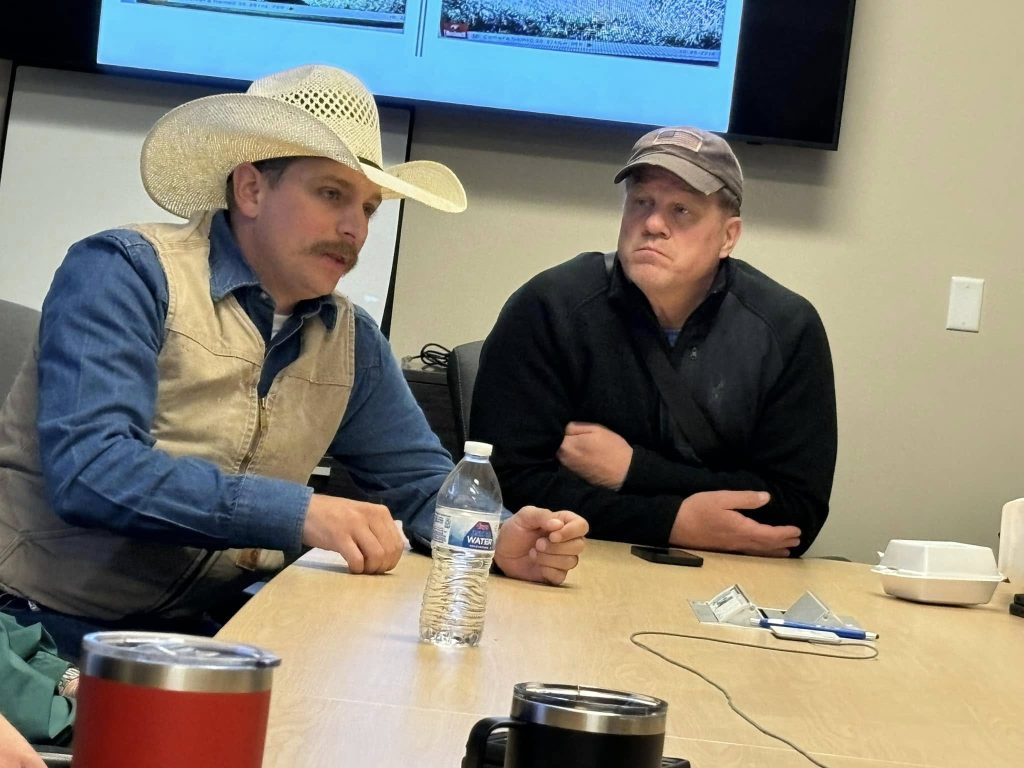
“You’re just displacing them until you secure the entire border – which Trump will do,” Dorow says.
“It’s the worst crime scene in the world with the worst resources.”
Obama’s Wall
Yes, Obama had a wall, but it’s smaller and easier to get over. Biden didn’t have a wall at all, of course; he shut Trump’s wall down within an hour of inauguration. The heavy machinery was pulled out a week or so after that. The surveillance balloons with their sensors were mostly grounded. The construction of security spotlights along the wall was halted. They were supposed to increase officer safety.
The numbers surged, and the beleaguered and outnumbered Border Patrol agents were pulled back into swelling processing centers. That left the legally hand-tied county sheriff as the first line of defense in the nation’s border war.
“We’re against illegal immigration. We are asking that people be screened; that they be productive members of society. The American people have spoken”
Trump’s wall is taller than Obama’s wall; the latter’s construction is a piece of history the public seems to have almost forgotten since Democrats are now fervently against walls. They were once for them. It’s believed most people aren’t psychologically willing to climb anything over 30 feet, Cochise County deputies say. So Trump built his steel bollard wall 30 feet in the air; even so, some people have tried scaling it with fatal results.
Obama’s wall:

George W. Bush built barriers along 526 miles of the 2,000-mile border, but they were vehicle barriers and fences shorter than 15 feet. Obama built 128 miles more. Border wall construction is often entangled in thorny controversies surrounding Native American lands, private land ownership rights, and wildlife refuges, not to mention endless pushback from the legacy media. Trump built 458 miles of wall during his first term, which includes replacements of inferior barriers, according to US Customs and Border Protection. At least 701 miles of primary border wall in total have been constructed.
“A lot of children are being hurt. Women are being trafficked. It’s modern-day indentured servitude.”
Everyone expects Trump will finish the job now that he’s been re-elected on a mandate surrounding border security. And that seems to give the deputies here a sense of relief, although they take great care not to politicize it.
Trump’s wall abruptly ends on the side of a steep hill that is guarded, on the Mexican side, by the cartel scout who stands near a tree on a mountain. You can walk around it thanks to Biden’s executive order.
Trump’s wall:
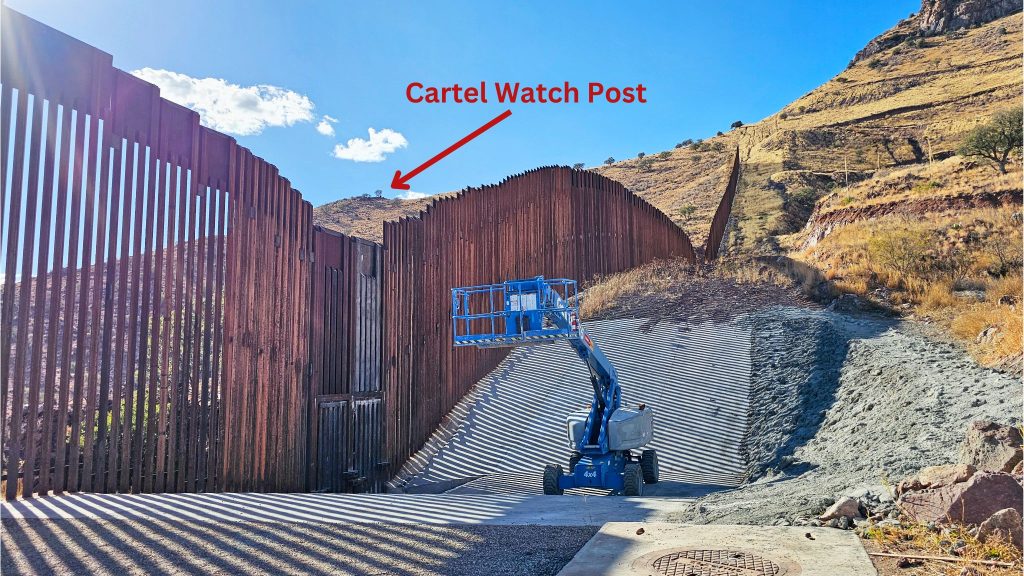
The cartel sentry watches the deputies (and us) through binoculars and we, in turn, watch him. He watched Trump too when Trump visited the wall here during the 2024 campaign, deputies say.
“The only people watching the border is the cartel,” a deputy notes.
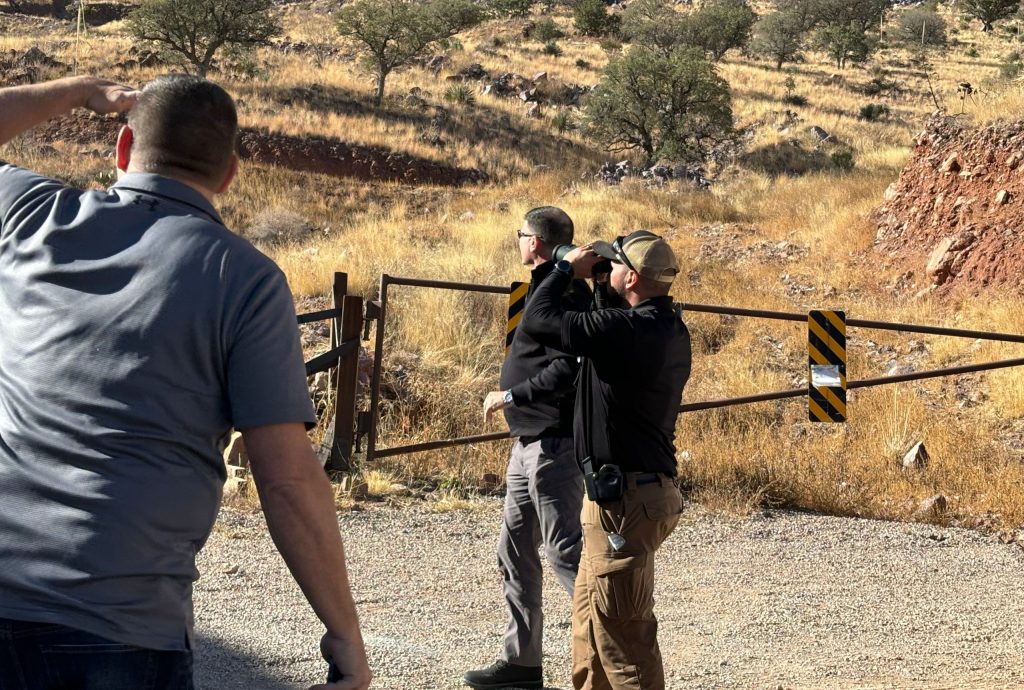
“The only peOPLE watching the border is the cartel,” A DEPUTY SAYS.
Sixty miles of terrain without a wall stands on the other side of the mountain. Steel posts once intended for the Trump wall are stacked in forgotten piles on the ground. They sit like metal soldiers for the call to action that will soon come.
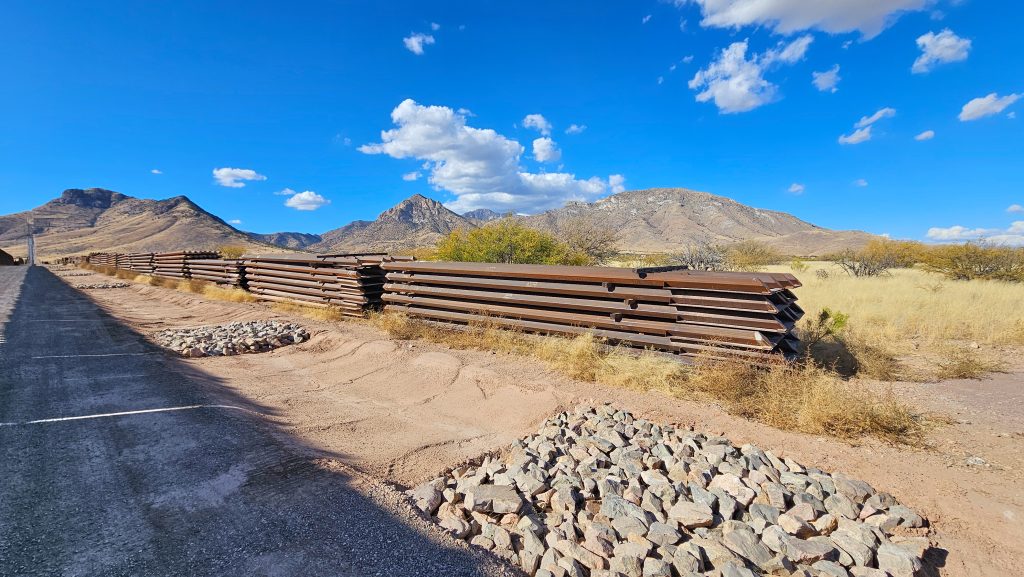

Trump came to this section of the wall, purposely holding his press conference in easy view of the cartel scout. “When Trump came back here, he looked right back at Trump,” Williams says.
Vice President Kamala Harris came to Cochise County too, but authorities say they didn’t find out until the last minute, and she was in and out fast, night and day.
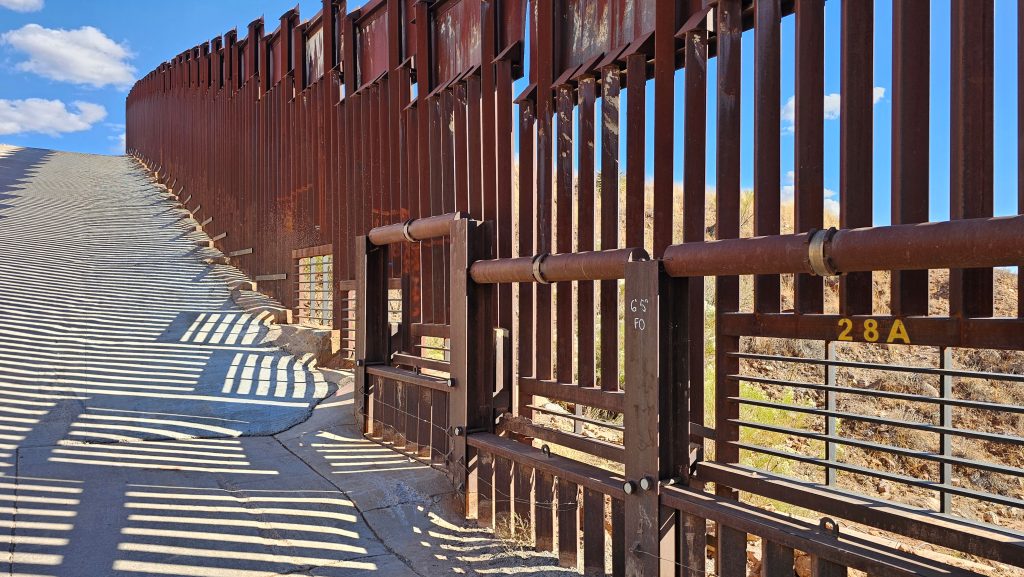
We see a frayed rope discarded on the U.S. side of the wall. It functioned as a pulley system. On the Mexican side, a ladder lies on the scrubby dirt. We’re told this makeshift apparatus was used by illegal immigrants to get over the Obama wall. It turns out that Democrats were for walls until they were against them.
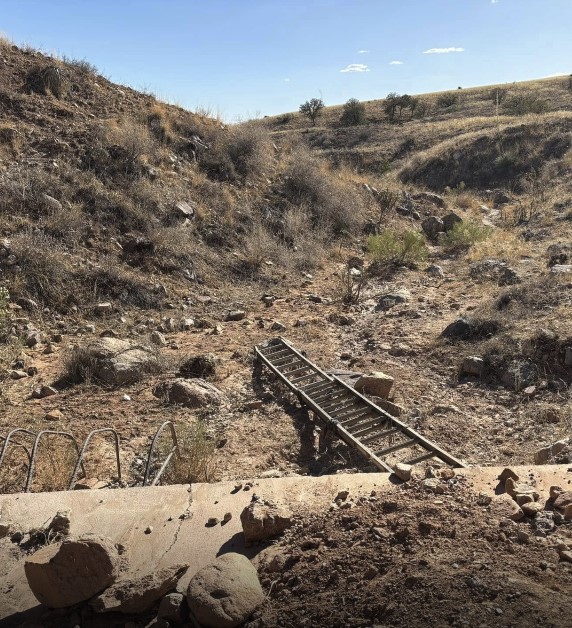
There are gates in the wall that are open several months of the year due to the potential for flash floods, completely unmanned by the Border Patrol. You heard that right.
The wall has gates.
A Model Approach
Here at the Arizona-Mexico border, the federal government’s abandonment of border security has pushed the problem into the streets and desert around Sierra Vista, and on the lap of the Cochise County Sheriff’s Department, which is led by a very proactive pro-border security sheriff, Mark Dannels, and contains 83 miles of border. The wall is easy to get around or over, but the illegal immigrants then have to make it past Dannels’ men.
He’s created the model program called Sabre (Southeastern Arizona Border Region Enforcement) team, and we are here for a briefing, along with former Secret Service agents, a Heritage Foundation scholar, a Wisconsin police chief, a biometric data expert, and others. Robert F. Kennedy Jr., Dr. Phil, and Trump’s no-nonsense border czar Tom Homan are among the dignitaries who received the same briefing, the latter two the day before. It’s a month after the election.
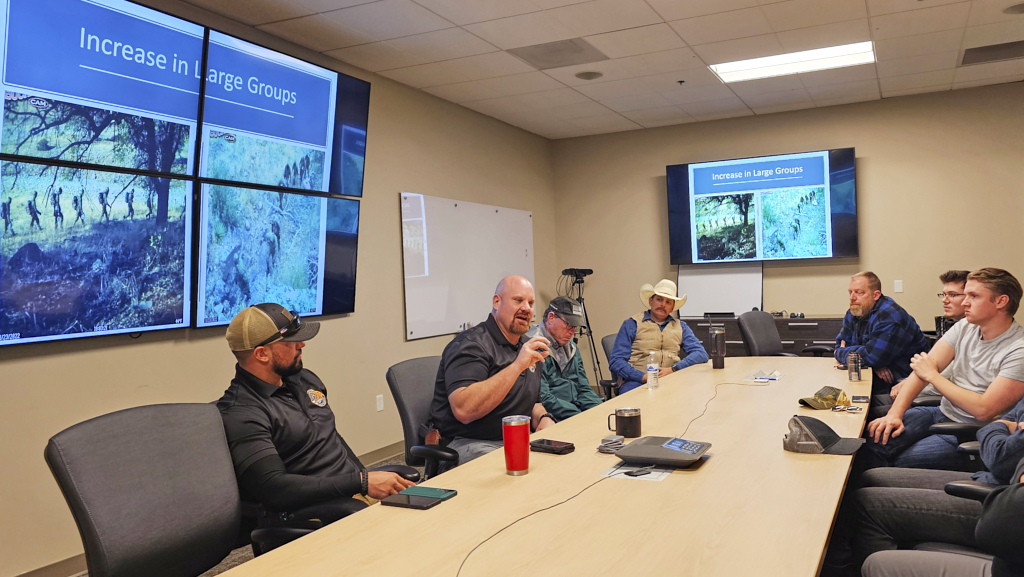
The sheriff’s briefings have swayed even some Democrats into realizing the importance of border security.
Capt. Williams, PIO Butler, and Detectives Essary and Eric Encinas, of the Cochise County Sheriff’s Department, lead the briefing.
“RFK sat where you are at,” Williams reveals. He was very interested, they say.
Encinas describes one incident where he was translating during questioning of a group of illegal immigrants when one literally said, “’The only reason we are here is we love Biden.’ They were like, ‘F*ck Trump,’ straight up. ‘We’re coming here because Biden wants us here.’”
The numbers are dramatic, according to a PowerPoint, including 190,000 illegal immigrants spotted, 442 drug mules, and a lot of meth, marijuana, cocaine, and fentanyl.
The Tucson Border Patrol sector, which includes Cochise County, “leads the Southwest border encounters with at least 366,000 of the more than 1.3 million illegal alien encounters so far this fiscal year,” U.S. Rep. Jim Jordan said in May at a Congressional hearing.
The numbers exploded for 3.5 years, the authorities say, and at the peak, they were seeing 10,000 people a month on their cameras. At one point, border crossers from the African country of Mauritania were brought from a neighboring county and dumped here, even though there were no Greyhound bus lines or people who spoke the language. In another instance, the border patrol simply released people from over-capacity shelters onto the streets, leading the sheriff to express public outrage.

Dorow shares a photo from the Tucson airport. “Non-U.S. Citizens Without Passports Only Enter Here,” a blue sign reads.
“They are absolutely flying them anywhere they want to go,” once they make it to Tucson or other cities, Williams says of the federal government.
The numbers decreased somewhat (March 2022 was the busiest month), but they’re spiking again since the November election. “As soon as the election was over, the numbers started to climb again,” says Williams.
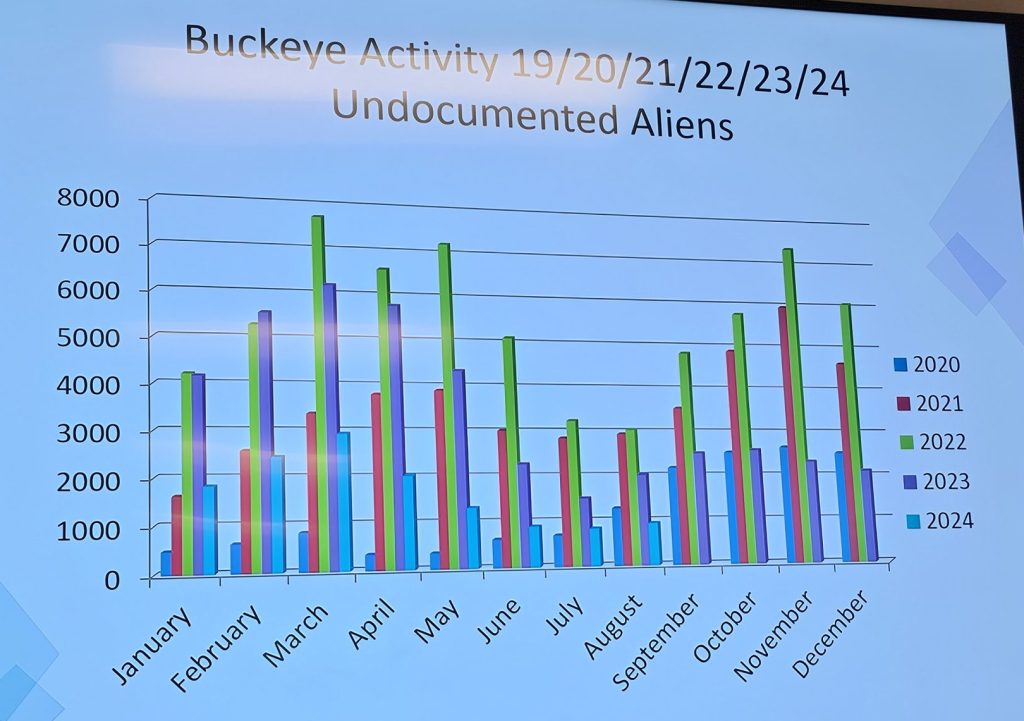
Our group is led by the action-oriented Dorow, the energy ball of a former Waukesha cop who now runs a fast-growing security company in Wisconsin. He was deputy assistant secretary of Homeland Security in the first Trump administration. He’s the husband of Jennifer Dorow, the Waukesha County judge who gained fame during the Christmas parade trial. He’s been taking calls from frantic healthcare companies needing security after the shooting in New York of a United Healthcare CEO.
 He takes groups down to Cochise County so people can see for themselves what is really happening at the border outside the warped filter of the legacy media, which tends to focus on stories about hard-working illegal immigrants toiling away on Wisconsin dairy farms, ignoring the fact that many of them must send a cut of their wages back to the cartels. Some also commit crimes that harm American citizens, but that’s not the narrative that interests much of the media; one man is accused of killing a retired Green Bay police officer.
He takes groups down to Cochise County so people can see for themselves what is really happening at the border outside the warped filter of the legacy media, which tends to focus on stories about hard-working illegal immigrants toiling away on Wisconsin dairy farms, ignoring the fact that many of them must send a cut of their wages back to the cartels. Some also commit crimes that harm American citizens, but that’s not the narrative that interests much of the media; one man is accused of killing a retired Green Bay police officer.
Sheriffs like Dannels are the backbone of American border enforcement, at least here, in this county where you can visit mock gunfights in the OK Corral, which is surrounded by RV parks and Trump flags. In fact, a few miles down the road, there is even a full-fledged “Trump store” with “fight, fight, fight” coffee mugs and Newsmax playing on a continuous loop.
On the Move
For some inexplicable reason, the Phoenix man outside the Dollar General allegedly picks up the two illegal immigrants and then makes them get out of his car a short way down the road, and that’s when Cochise County deputies and the border patrol agents who team up with them (two are brothers), swarm him.
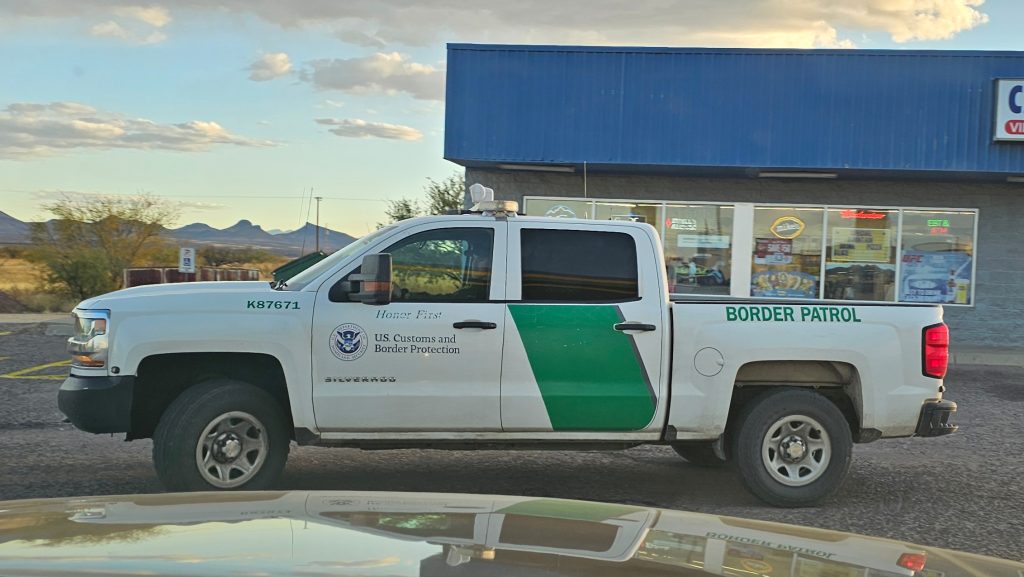
Like a modern-day team of Avengers, the officers work seamlessly together, and their instincts are guided by street-level experience. They’ve seen the same playbook night after night, so they know exactly what to look for. Rental plates draw immediate suspicion, and evasive maneuvers do, too. They embrace their role against a kaleidoscope of political realities they don’t control. It’s maddening to think of the modern media narratives that paint guys like these as society’s villains.
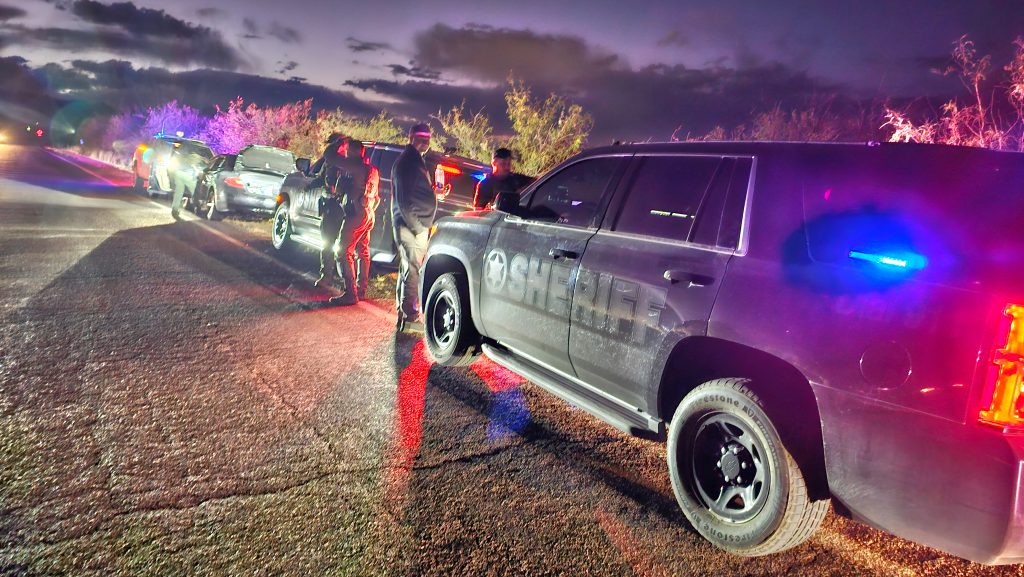
The Phoenix man is cooperative; now stopped on the side of the road by a team of officers with flashing lights, he is strangely chatty. He claims he is trying to pay off a gambling debt and suddenly had a “moral” awakening, which is why he allegedly dropped the illegal immigrants back off.
There’s a website involved. His belated moral awakening doesn’t spare him. They cuff the man and are referring a felony for human smuggling. It turns out he’s also wanted on a minor warrant.
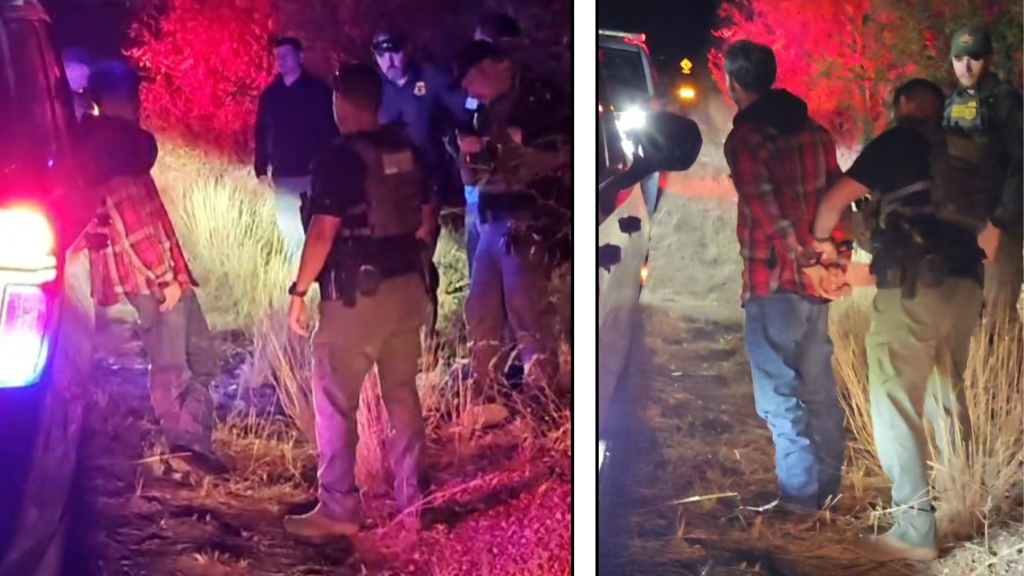
This is how it works, the Cochise County officials explain in our briefing.
People – from Mexico, El Salvador, Honduras, and the like – pay the cartel to smuggle them through the border in places like Cochise County. The going rate is about $8,000. The cartels smuggle people over the border for profit, and they bring over drugs too, in great numbers. Gone are the days of Miami Vice and the Caribbean theater; 97 percent of illicit drugs are brought over the southern border today, authorities say.
The drugs are brought in backpacks and hidden in secret compartments. People from some countries, like Venezuela, Haiti, and Nicaragua, were granted temporary legal status by Biden, which means they can’t be deported. Trump is expected to revoke it.
The Cochise County Sheriff’s Department takes us into a control room where they have the camera feeds patched together on a big live screen, sort of like you’d see in an episode of “Homeland” or at the NASA control room. They started with 30 cameras in the back of a pickup, Essary says.
We aren’t allowed to take pictures in the control room, but they pop the “positive” hits on the screen, and the camera feeds are immediately populated with illegal immigrants who were videotaped sneaking across the border in the past 24 hours, along with a lot of pictures of cows. Some are sneaking through a nearby Indian reservation with no wall.
“They try to defeat us every day,” Williams says.
It can be dangerous business. Dr. Phil’s camera crew videotaped the deputy who took us on a ride along, Dan Brennan, stopping to speak with an accused illegal immigrant in a gas station parking lot. The man took off in his car and then on foot, but he tripped over something and broke his leg.
In other instances, smugglers gun it when they see law enforcement driving into opposing lanes of traffic or going 100 miles per hour because the cartels tell them authorities will call off pursuits if they get dangerous enough.
Williams says there are three stages to this: The wall; the tech (lights, sensors, and cameras); and the roads.
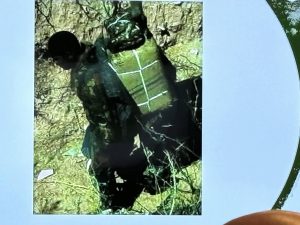
Authorities parse through 75,000 images a day from the 1,197 cameras designed to “detect human activity at the border.” They are built in-house. The faux rocks are repaired in a large garage with a makeshift weight room that housed the Secret Service during Trump’s visit. The Sheriff’s Department does all of this with six deputies assigned to the team; there are also 13 border patrol agents in the area.
“Kids are for rent. The cartels have “no regard for human life.”
A deputy is assigned to repair the surveillance cameras and the solar panels that power them. It can take several weeks to send a camera in for repair to the manufacturer, so the deputy has taught himself how to do the necessary repairs and get the camera back out into the field, often on the same day.
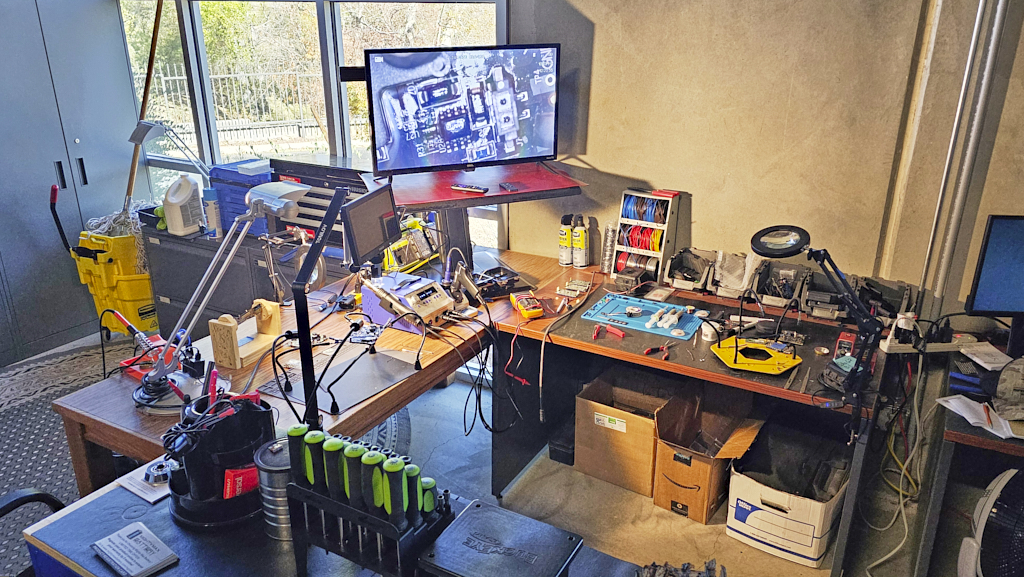
Williams says Cochise County – named after an Apache chief – is “constantly pushing the envelope on new technology.”
Officials are excited about new AI technologies and how they might be implemented to help them identify which backpacks are likely to be loaded with drugs (or firearms). But that technology hasn’t been brought here yet.
The folks monitoring the cameras alert the border patrol to the positive hits because, although the Sheriff’s Department can do some things (such as arrest smugglers on county highways), they can’t deport people back to Mexico (or China or India or wherever they’ve come from). So they must hand the intelligence or the actual illegal immigrants themselves over to the border patrol, where they are sometimes deported but sometimes released.
“We have to turn them over to the U.S. Border Patrol,” says Williams. “We can detain them as long as the Border Patrol is on its way.” He recalls how one illegal immigrant taunted, “Hey gringo, if you want to see me again in a couple hours, just wait. I’ll be back right here.”
Deputies have horror stories about other jurisdictions where kids are sometimes drugged and forced to pose in fake family units because it’s easier for family units to get through. Then, they are taken back to Mexico and recycled into a new family unit. They say there are about 5,000 known cases of this. Biden got rid of DNA testing at the border, too.
“They are either drugged up or emotionally shut down,” says Williams.
Authorities say the kids were “safer” when they were in detention, a reference to the hyped media narrative of “children kept in cages” or “separated from their families.”
Authorities say that smugglers are often American citizens who are recruited by cartels via social media posts promising $400 to $2,000 a head if they drive to a border town and pick up illegal immigrants, ferrying them to cartel-run stash houses in places like Phoenix. They caught a former Chicago and Tucson cop allegedly doing this.
“The unknown is what concerns us. It’s a wide-open DESERT.”
“They are just everyday Joes,” says Deputy Brennan.
“There are juveniles doing this,” Williams says. “The cartels use social media with pictures of wads of cash.” Arizona made a change so juvenile smugglers can be prosecuted as adults.
A Journey North
From the stash houses, the cartel brings the illegal immigrants north, to places like Chicago, Portland or Wisconsin. There, they are placed with American companies – landscaping, farms, factories, and the like – some of which have advertised for employees in Mexico.
In some – if not many – of the cases, the company owner may be largely clean, but the manager is a cartel plant, authorities say. In many of these American towns, there is a store or a restaurant that functions as a cartel profit machine, where the workers hand over a cut of their paychecks.

“If you don’t have funding, you will be indebted to the cartel,” Williams says. “That’s exactly how it’s done. If you really start looking for it, it’s everywhere.”
Other immigrants are trafficked in the United States, and authorities say the Biden-Harris administration facilitates the human trafficking of women and kids by sending them to unvetted homes after they provide names of sponsors that were given to them by cartels. The abuse of women is so bad that they sometimes carry birth control and condoms with them on their hellacious journey to the U.S. border.
It’s a hellscape.
Body recovery is part of deputies’ duties. They sometimes find the bodies of juveniles. They found multiple dead teenagers along a roadway. The illegal immigrants die from exposure or dehydration in the relentless Arizona sun. The cartels videotape some of the deaths to send back to families. People die from snakes and lack of water. One year, they had 19 body recoveries. Some are buried in makeshift graves. Other bodies are returned.
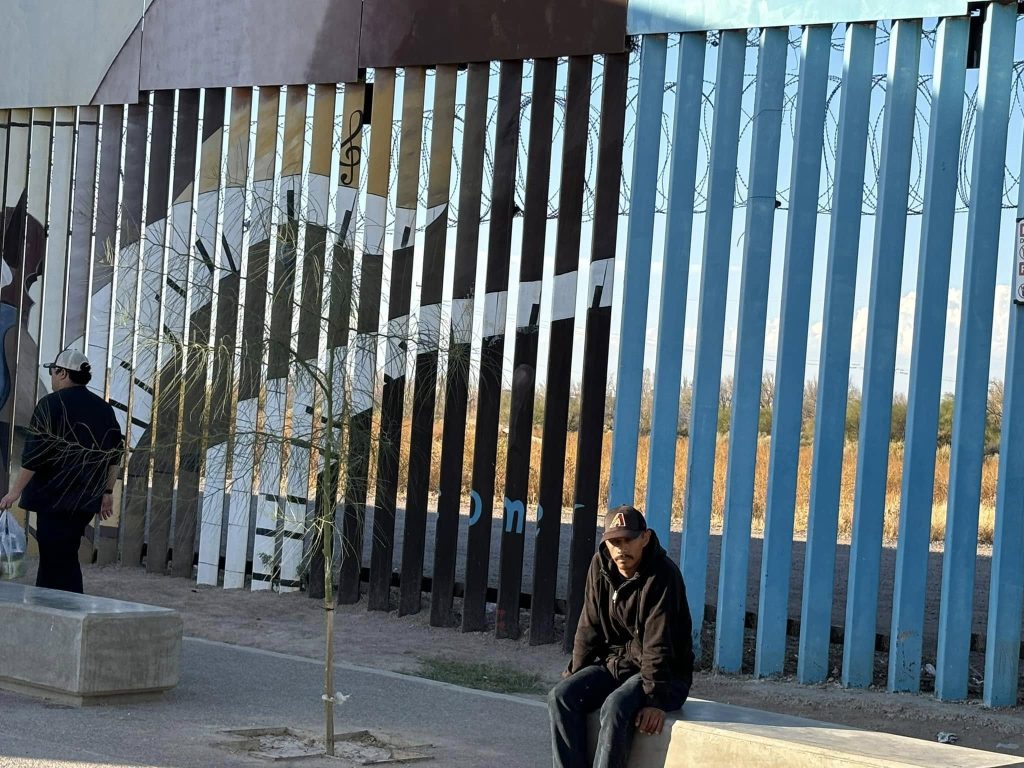
Relatively little of this stark reality seems to make it through the legacy media filter or out of the mouths of Democratic politicians. Witness Wisconsin Gov. Tony Evers failing to acknowledge these sobering realities in an interview that ran the same day as our briefing. No mention that the cartels are profiting. No concerns for the welfare of women or children. No pause about the low wages and worker exploitation. No acknowledgment that some criminals are getting through. Instead, Evers trots out the same old tired (and rejected) Kamala Harris border talking point.
In the border town of Sierra Vista, Arizona, authorities and experts say the cartels control the border and facilitate the human and sex trafficking of children and women north. They also plant cartel members as managers in companies that employ illegals in northern towns and… https://t.co/lHXeF5AQMA
— Wisconsin Right Now (@wisconsin_now) December 6, 2024
He says that if the border bill passes (it won’t), THEN we can talk about securing the border.
Then? Not now?
If Evers were to educate himself and attend a Cochise County briefing, maybe he would see that there is nothing humanitarian about having a wide open border policy or ignoring realities, as it turns out.
Contrast his words with those of Deputy Oletski: “If we can stop one child from being abused for one more day, it’s a win.”
Table of Contents







